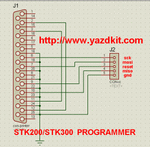Instant
Newbie level 6
May i know what is the software used to program the ATmega 32-16pi Microcontroller?
Besides that, what is the advantage of using ATmega 32-16pi instead of PIC 16F877A?
Besides that, what is the advantage of using ATmega 32-16pi instead of PIC 16F877A?
